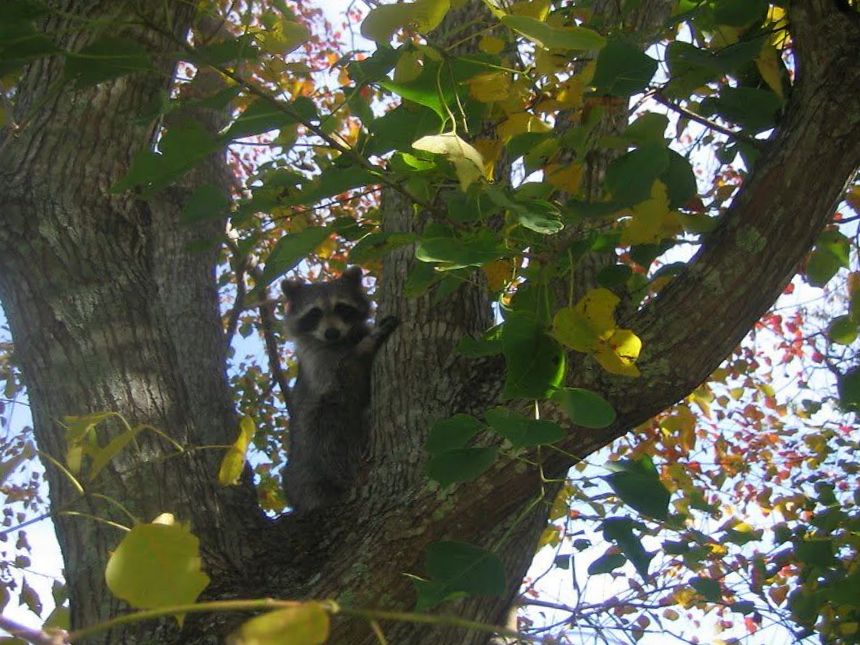- info@pestcontrolwildlife.com
Call us for help in your town
America's Wildlife Experts
About Raccoons

Raccoons are mammals that belong to the Procyonide family. They are small animals that live on trees, but they can adopt to live on ground. They are found all through America, especially in the tropical swamps of the Amazon and the north woods of Canada.
Raccoon Appearance
The body of the raccoon has brown, black and gray colors. The color around the eyes looks black, which makes it, seems like the animal is wearing a mask. The tail of the raccoon is striped in black, gray and white. Its paws look small, but they are useful in scavenging for food. The raccoon has a black nose with a pointed and long snout. Each foot of the raccoon has five toes that they use to climb trees and move on land.
Raccoon Biology
The males of the species often live alone, but they allow the presence of females on their territory or to go near them. Mating season is during spring, and the offspring is born a couple of months later. The babies stay with their mother until the next spring arrives. They give birth to around three to seven baby raccoon at a time. They don't hibernate, but they do eat a lot during autumn.
Life Cycle
The mating season of raccoons is between January and March. The female gives birth after two months of mating. The young raccoons are able to stand when they are four to six weeks old. The mother carries her babies around the neck, just like how a cat carries a kitten. The mother teaches her offspring to hunt food and climb trees. Mothers are protective of their babies and will save them from predators. Young raccoons have darker fur coat compared to adult raccoons, and the young ones stay with their mother for a year.
Raccoon Habitat
In the past, raccoons lived only in the tropics where they foraged along the riverbanks. But throughout the years they moved to the northern part of the continent, and have adapted to the new territories that included expanding their diet. They were known to live in burrows and tree cavities. During nighttime, they go out to hunt crustaceans and frogs, while trying to avoid predators such as foxes and coyotes. One reason why they moved northwards was barns that provided them shelter from cold winters. At present, there are raccoons found in Alaska.
Raccoon's habitat was previously limited to the mixed and deciduous forests of North America, but the animal managed to adapt to other habitats, from large cities to mountainous terrains. They even survive in urban areas, because trapping and hunting are restricted, lack of predators, and lots of human food. The size of the raccoon's territory depends on the food supply and habitat.
Raccoon's Diet
Raccoons are more active during nighttime. In the daytime, they spend most of the time in their dens or tree holes. But when night comes, they go out and climb trees, swim over rivers and streams and roam to find food. They use their feet to grab prey and bite off large portions. They are omnivorous, and they prefer fish, frogs, and crabs. They also eat nuts and berries, larvae, bugs, and worms. They will also look for birds' nests to get their eggs or baby birds. They also hunt for smaller rodents.
These are the things that you need to know about raccoons. They are intelligent and playful animals, and some people even keep them as pets. However, adult raccoons are not ideal as pets and should be left alone in the wild.


















